
How to Use ESP32: Examples, Pinouts, and Specs
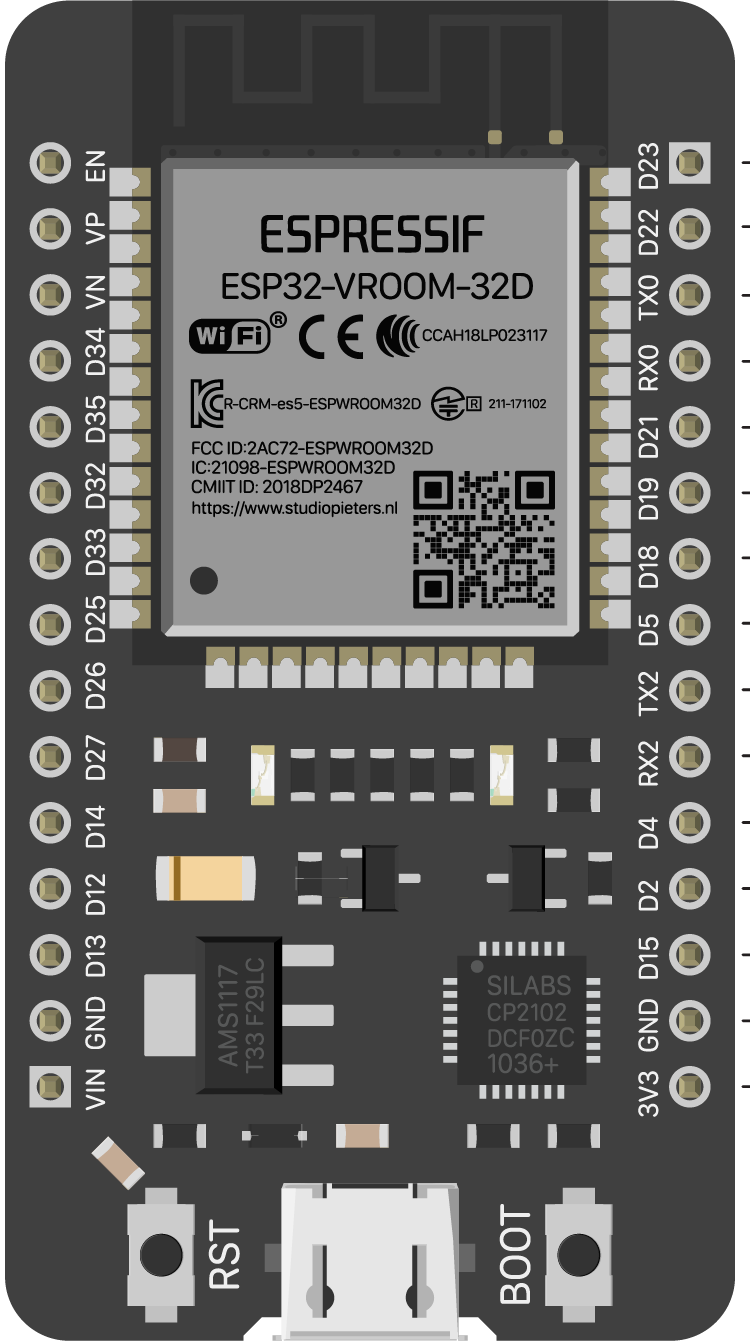
 Design with ESP32 in Cirkit Designer
Design with ESP32 in Cirkit DesignerIntroduction
The ESP32, manufactured by Espressif, is a low-cost, low-power system on a chip (SoC) with integrated Wi-Fi and Bluetooth capabilities. It is designed for a wide range of applications, including Internet of Things (IoT) devices, smart home systems, wearable electronics, and industrial automation. The ESP32 CH340 variant includes a CH340 USB-to-serial converter, making it easier to program and debug the module via a USB connection.
With its dual-core processor, extensive GPIO options, and support for multiple communication protocols, the ESP32 is a versatile and powerful choice for embedded systems development.
Explore Projects Built with ESP32
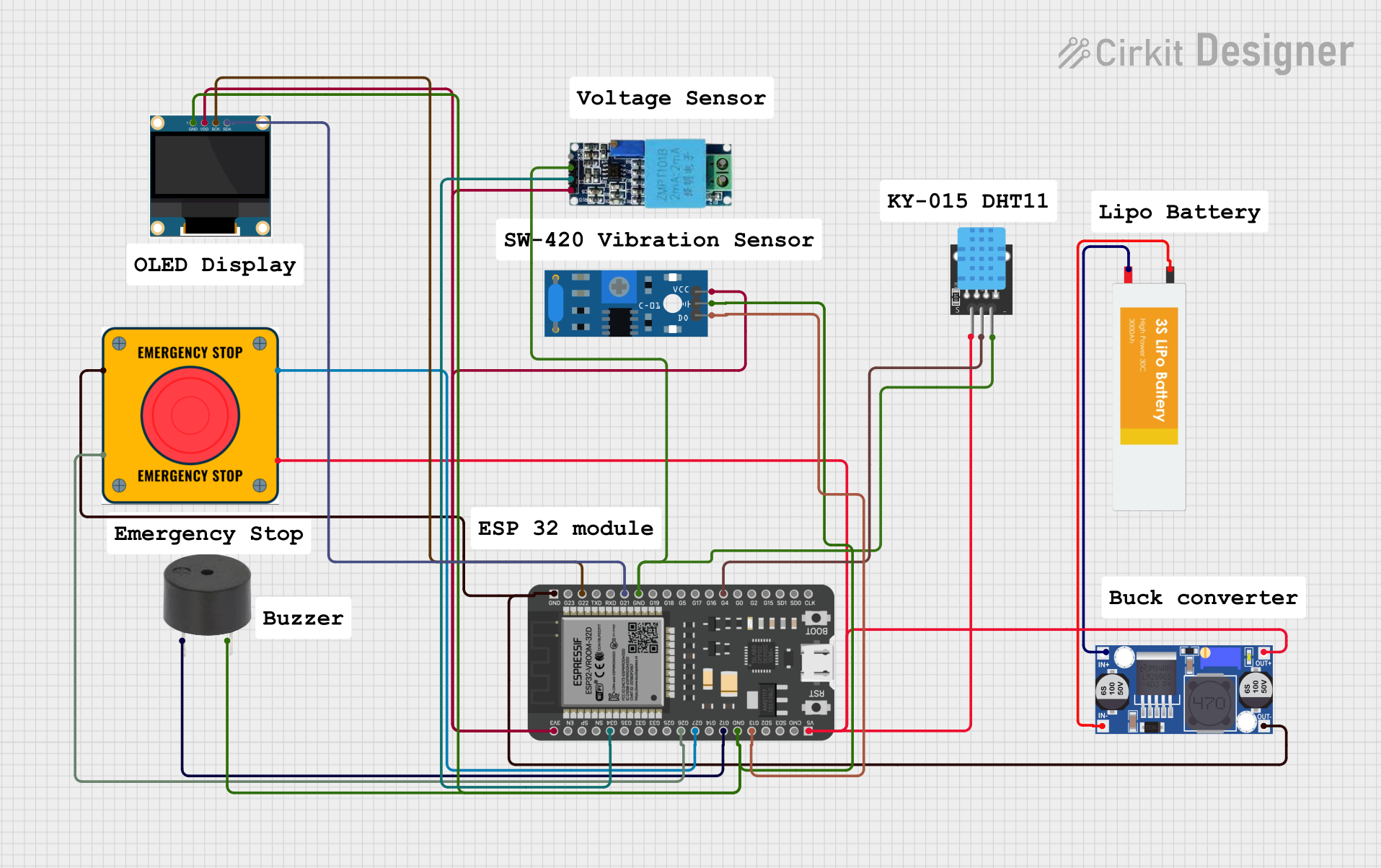
 Open Project in Cirkit Designer
Open Project in Cirkit Designer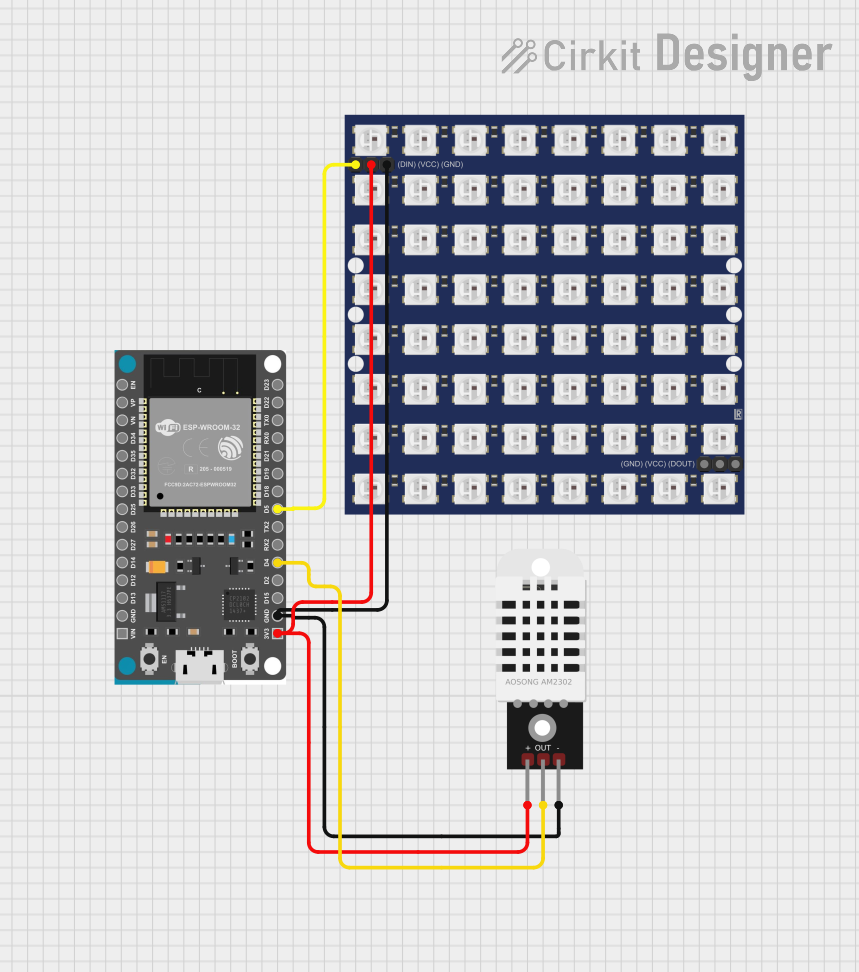
 Open Project in Cirkit Designer
Open Project in Cirkit Designer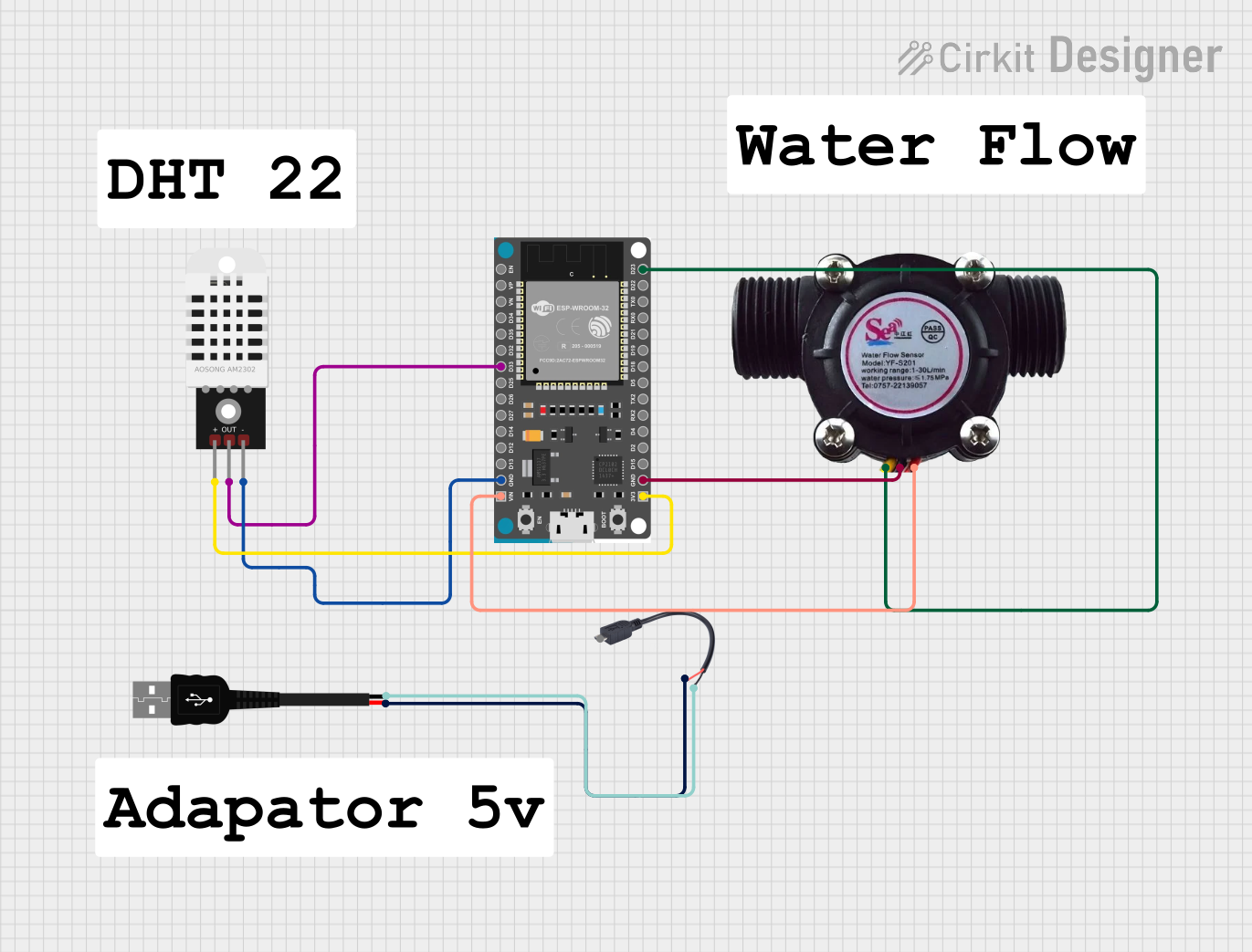
 Open Project in Cirkit Designer
Open Project in Cirkit Designer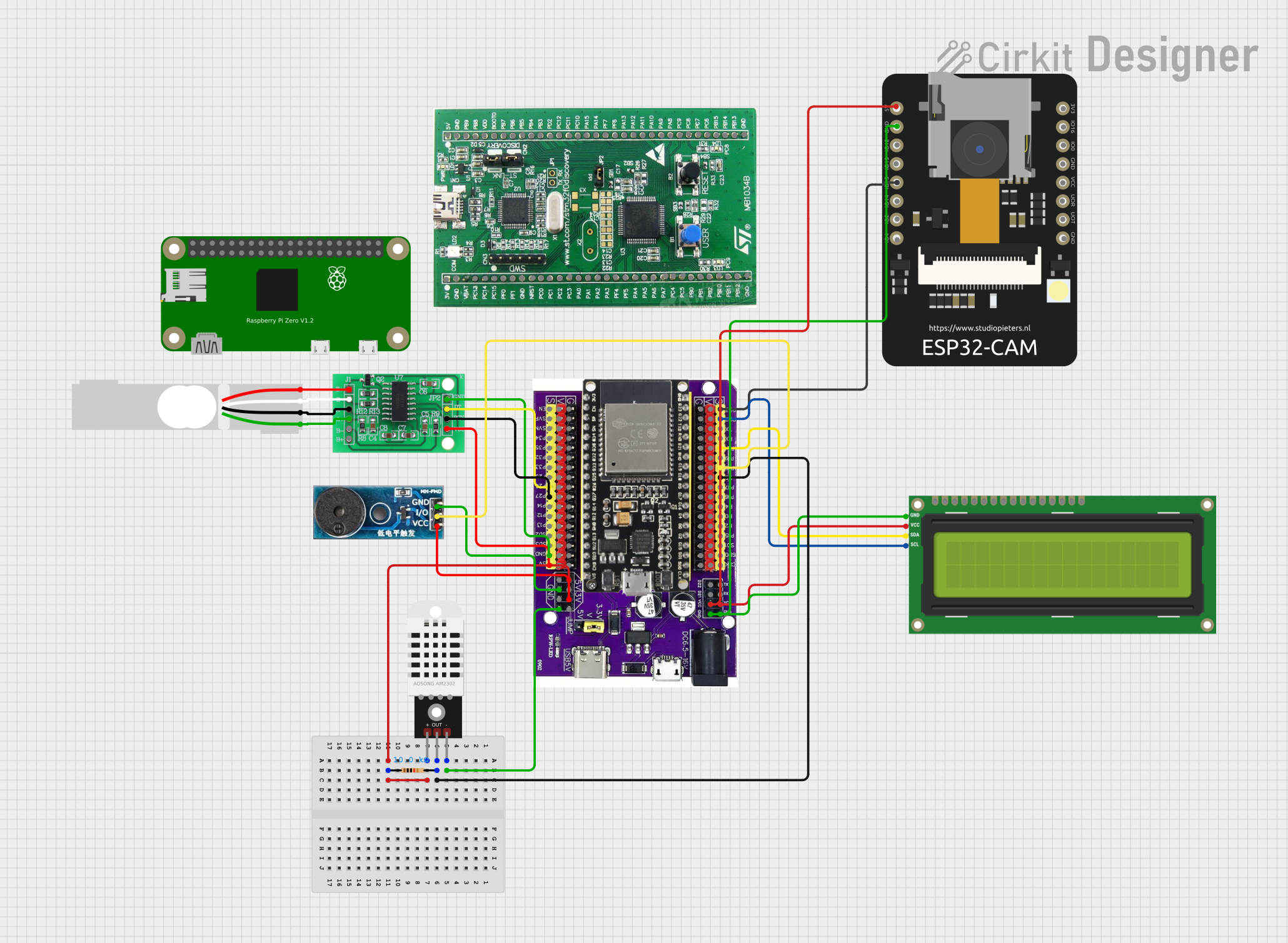
 Open Project in Cirkit Designer
Open Project in Cirkit DesignerExplore Projects Built with ESP32

 Open Project in Cirkit Designer
Open Project in Cirkit Designer
 Open Project in Cirkit Designer
Open Project in Cirkit Designer
 Open Project in Cirkit Designer
Open Project in Cirkit Designer
 Open Project in Cirkit Designer
Open Project in Cirkit DesignerCommon Applications
- IoT devices and smart home automation
- Wireless sensor networks
- Wearable electronics
- Industrial control systems
- Robotics and drones
- Prototyping and educational projects
Technical Specifications
Key Technical Details
| Parameter | Value |
|---|---|
| Manufacturer | Espressif |
| Part ID | ESP32 CH340 |
| Processor | Dual-core Xtensa® 32-bit LX6 microprocessor |
| Clock Speed | Up to 240 MHz |
| Flash Memory | 4 MB (varies by module) |
| SRAM | 520 KB |
| Wi-Fi | 802.11 b/g/n (2.4 GHz) |
| Bluetooth | v4.2 BR/EDR and BLE |
| Operating Voltage | 3.3 V |
| Input Voltage (via USB) | 5 V |
| GPIO Pins | 34 (multipurpose) |
| ADC Channels | 18 (12-bit resolution) |
| DAC Channels | 2 |
| Communication Interfaces | UART, SPI, I2C, I2S, CAN, PWM |
| USB-to-Serial Chip | CH340 |
| Power Consumption | Ultra-low power modes available |
| Operating Temperature | -40°C to 85°C |
Pin Configuration and Descriptions
The ESP32 has 38 pins in total, with the following key pin assignments:
| Pin Number | Pin Name | Description |
|---|---|---|
| 1 | EN | Enable pin (active high) |
| 2 | IO0 | GPIO0, used for boot mode selection |
| 3 | IO1 (TXD0) | UART0 Transmit (TX) |
| 4 | IO3 (RXD0) | UART0 Receive (RX) |
| 5 | IO2 | GPIO2, general-purpose I/O |
| 6-11 | IO12-IO15 | GPIO pins, can be used for SPI or PWM |
| 12 | GND | Ground |
| 13 | 3V3 | 3.3 V power output |
| 14-37 | IO16-IO39 | GPIO pins, ADC, DAC, and other functions |
| 38 | VIN | Input voltage (5 V via USB or external) |
Note: Some pins have specific functions or limitations. Refer to the ESP32 datasheet for detailed pin multiplexing information.
Usage Instructions
How to Use the ESP32 in a Circuit
Powering the ESP32:
- Connect the ESP32 to a 5 V USB power source or provide 3.3 V directly to the 3V3 pin.
- Ensure the power supply can provide sufficient current (at least 500 mA).
Programming the ESP32:
- Install the CH340 driver on your computer to enable USB communication.
- Use the Arduino IDE or Espressif's ESP-IDF for programming.
- Select the correct board (e.g., "ESP32 Dev Module") and COM port in the IDE.
Connecting Peripherals:
- Use GPIO pins for digital input/output, ADC pins for analog input, and DAC pins for analog output.
- Ensure peripherals operate at 3.3 V logic levels to avoid damaging the ESP32.
Uploading Code:
- Press and hold the "BOOT" button while uploading code to enter programming mode.
- Release the button once the upload begins.
Important Considerations and Best Practices
- Voltage Levels: The ESP32 operates at 3.3 V. Avoid applying 5 V to GPIO pins.
- Boot Mode: GPIO0 must be pulled low during boot to enter programming mode.
- Power Supply: Use a stable power source to prevent unexpected resets or malfunctions.
- Wi-Fi and Bluetooth: Avoid placing the ESP32 near metal objects or enclosures that may interfere with wireless signals.
Example Code for Arduino UNO Integration
The following example demonstrates how to blink an LED connected to GPIO2 of the ESP32:
// Blink an LED connected to GPIO2 on the ESP32
// Ensure the LED's anode is connected to GPIO2 and cathode to GND
#define LED_PIN 2 // GPIO2 is commonly used for onboard LEDs
void setup() {
pinMode(LED_PIN, OUTPUT); // Set GPIO2 as an output pin
}
void loop() {
digitalWrite(LED_PIN, HIGH); // Turn the LED on
delay(1000); // Wait for 1 second
digitalWrite(LED_PIN, LOW); // Turn the LED off
delay(1000); // Wait for 1 second
}
Troubleshooting and FAQs
Common Issues and Solutions
ESP32 Not Detected by Computer:
- Ensure the CH340 driver is installed correctly.
- Check the USB cable and port for proper connection.
Code Upload Fails:
- Verify the correct board and COM port are selected in the IDE.
- Hold the "BOOT" button during the upload process.
Wi-Fi Connection Issues:
- Ensure the Wi-Fi credentials are correct.
- Check for interference or weak signal strength.
Random Resets or Instability:
- Use a stable power supply with sufficient current capacity.
- Avoid using GPIO pins that conflict with boot mode.
FAQs
Q: Can the ESP32 operate on battery power?
A: Yes, the ESP32 can be powered by a LiPo battery or other 3.3 V sources. Use a voltage regulator if necessary.
Q: How do I reset the ESP32?
A: Press the "EN" button to reset the ESP32.
Q: Can I use the ESP32 with 5 V logic devices?
A: No, the ESP32 operates at 3.3 V logic levels. Use a level shifter for compatibility with 5 V devices.
Q: What is the maximum range of the ESP32's Wi-Fi?
A: The range depends on environmental factors but typically extends up to 100 meters in open space.